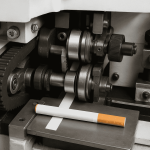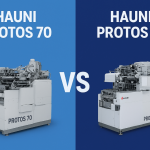The cigarette manufacturing industry faces a multitude of challenges in today’s economic landscape. With rising raw material costs, stringent regulatory requirements, and shifting consumer preferences, manufacturers must adopt innovative strategies to optimize operations and reduce expenses. To remain competitive, it is crucial to implement effective cost-saving techniques that can enhance efficiency and profitability. In this comprehensive guide, we will explore five proven cost-saving techniques that can make a significant difference in the operations of cigarette manufacturers.
Understanding the Cost Structure of Cigarette Manufacturing
Before diving into the specific techniques, it’s essential to understand the key components of the cost structure in cigarette manufacturing. The primary costs typically include:
- Raw Materials: The most significant expenses involve tobacco, paper, and filters, which are essential components of cigarette production.
- Labor: Skilled labor is necessary for production, quality control, and packaging, impacting overall costs.
- Energy: Manufacturing processes are energy-intensive, contributing significantly to operational expenses.
- Regulatory Compliance: Meeting legal requirements incurs various costs associated with reporting, packaging, and product safety.
Understanding these components allows manufacturers to pinpoint areas where savings can be achieved.
Technique 1: Optimizing Supply Chain Management
Importance of Supply Chain Management
A streamlined supply chain is crucial for cost efficiency in cigarette manufacturing. By optimizing supply chain management, manufacturers can reduce lead times, minimize waste, and lower procurement costs. A well-managed supply chain not only ensures the availability of quality raw materials but also enhances overall operational efficiency.
Strategies for Optimization
- Supplier Collaboration: Building strong relationships with suppliers can lead to better pricing and more favorable terms. By collaborating closely with suppliers, manufacturers can negotiate bulk purchasing agreements and reduce costs.
- Just-in-Time Inventory: Implementing a Just-in-Time (JIT) inventory system helps reduce storage costs and minimizes the risk of excess inventory. This strategy involves synchronizing production schedules with supply deliveries, ensuring materials arrive only as needed.
- Data Analytics: Utilizing data analytics tools can improve demand forecasting and inventory management. By analyzing historical sales data, manufacturers can make informed decisions regarding procurement, reducing excess inventory and associated costs.
Case Study: A Leading Manufacturer’s Success
A major cigarette manufacturer adopted a JIT inventory system, resulting in a 20% reduction in storage costs. By leveraging data analytics, they improved demand forecasting accuracy, significantly reducing excess inventory. This optimization allowed the company to redirect resources toward enhancing product quality and marketing initiatives.
Technique 2: Investing in Automation and Technology
Benefits of Automation
Automation can greatly enhance efficiency in cigarette manufacturing processes, leading to significant cost savings. By investing in advanced machinery and technology, manufacturers can streamline production, minimize labor costs, and improve product consistency.
- Increased Efficiency: Automated systems can operate continuously, increasing production rates while reducing downtime.
- Enhanced Precision: Automation minimizes human error, leading to more consistent product quality and reducing waste.
- Lower Labor Costs: While initial investments can be high, long-term savings in labor costs often outweigh these expenditures. Automation allows companies to reallocate human resources to more critical areas of the business.
Example: Modernizing Production Lines
One manufacturer implemented automated production lines, which increased output by 30% while reducing labor costs by 25%. This shift not only improved efficiency but also enhanced product consistency. Additionally, the manufacturer could reallocate resources toward research and development, fostering innovation in product offerings.
Technique 3: Implementing Energy Efficiency Measures
Understanding Energy Costs
Energy costs are a significant component of cigarette manufacturing. By implementing energy efficiency measures, manufacturers can reduce their energy consumption and associated costs. Reducing energy usage not only contributes to lower operational costs but also supports sustainability initiatives.
Energy Efficiency Strategies
- Upgrading Equipment: Investing in energy-efficient machinery can lead to substantial savings. Modern equipment often comes with advanced features that optimize energy use.
- Energy Audits: Conducting regular energy audits helps identify areas for improvement. By understanding energy consumption patterns, manufacturers can implement targeted strategies to reduce waste.
- Renewable Energy Sources: Exploring renewable energy options, such as solar or wind power, can reduce dependence on traditional energy sources. Although the initial investment may be significant, the long-term savings and environmental benefits are substantial.
Real-World Impact: Energy Savings in Action
A cigarette manufacturer conducted an energy audit and upgraded to energy-efficient machinery, resulting in a 15% reduction in energy costs. Additionally, they installed solar panels, further decreasing their energy expenditure. This commitment to energy efficiency not only saved costs but also enhanced their corporate social responsibility profile.
Technique 4: Enhancing Quality Control Processes
The Role of Quality Control
Effective quality control processes ensure product consistency and reduce costs associated with defects and returns. By implementing robust quality control measures, manufacturers can minimize waste, improve customer satisfaction, and enhance brand reputation.
Key Quality Control Techniques
- Regular Inspections: Conducting frequent inspections throughout the production process helps catch defects early. This proactive approach reduces the likelihood of costly recalls and rework.
- Employee Training: Investing in training for employees ensures they are equipped to maintain quality standards. A well-trained workforce is more capable of identifying and resolving quality issues promptly.
- Feedback Loops: Establishing feedback mechanisms allows for continuous improvement based on product performance and customer feedback. Manufacturers can adapt quickly to market changes and consumer preferences.
Success Story: Reducing Defect Rates
One manufacturer implemented a rigorous quality control program that reduced defect rates by 40%. This improvement not only enhanced customer satisfaction but also significantly lowered costs associated with rework and returns. As a result, the manufacturer experienced increased sales due to positive consumer feedback and brand loyalty.
Technique 5: Streamlining Packaging Processes
The Importance of Efficient Packaging
Packaging is a critical aspect of cigarette manufacturing that can contribute significantly to overall costs. By streamlining packaging processes, manufacturers can achieve substantial savings while maintaining product integrity.
Strategies for Efficient Packaging
- Material Optimization: Selecting cost-effective packaging materials without compromising quality can lead to savings. Manufacturers should explore alternative materials that provide the necessary protection while reducing costs.
- Automated Packaging Solutions: Investing in automated packaging equipment can speed up processes and reduce labor costs. Automation in packaging not only enhances efficiency but also improves consistency in presentation.
- Sustainable Packaging: Exploring eco-friendly packaging options can appeal to environmentally conscious consumers. Sustainable practices can also result in cost savings through reduced material usage and waste.
Example: Packaging Innovations
A cigarette manufacturer explored sustainable packaging solutions, opting for biodegradable materials. This decision not only reduced packaging costs by 10% but also attracted a new customer base concerned with environmental impact. The company’s commitment to sustainability positioned them favorably in a competitive market.
Additional Strategies for Cost Reduction
Employee Engagement and Training
Investing in employee training and engagement can lead to a more efficient workforce. When employees are well-trained and motivated, they perform their tasks more effectively, reducing errors and waste. Engaged employees are also more likely to contribute ideas for cost-saving measures, fostering a culture of continuous improvement.
Continuous Improvement Culture
Fostering a culture of continuous improvement encourages employees to identify areas for cost reduction and efficiency gains. Regular brainstorming sessions and open forums for feedback can yield valuable insights that drive operational efficiency.
Utilizing Technology for Tracking
Implementing technology solutions for tracking production metrics and costs can help manufacturers identify inefficiencies and areas for improvement. Software solutions can provide real-time data analysis, facilitating informed decision-making.
Case Study: Successful Implementation of Technology
A leading cigarette manufacturer integrated an enterprise resource planning (ERP) system that centralized data from various departments. This system provided real-time insights into production efficiency, costs, and inventory levels. As a result, the manufacturer achieved a 15% reduction in operational costs within the first year of implementation.
Conclusion
In a competitive market, cigarette manufacturers must adopt innovative cost-saving techniques to maintain profitability. By optimizing supply chain management, investing in automation, enhancing energy efficiency, implementing robust quality control processes, and streamlining packaging, manufacturers can achieve significant savings. Additionally, fostering a culture of continuous improvement and engaging employees in the process can further enhance operational efficiency.
The adoption of these strategies not only supports financial health but also aligns with sustainability goals, appealing to a broader consumer base. As the landscape of the cigarette manufacturing industry continues to evolve, embracing change and innovation will be key to long-term success.





